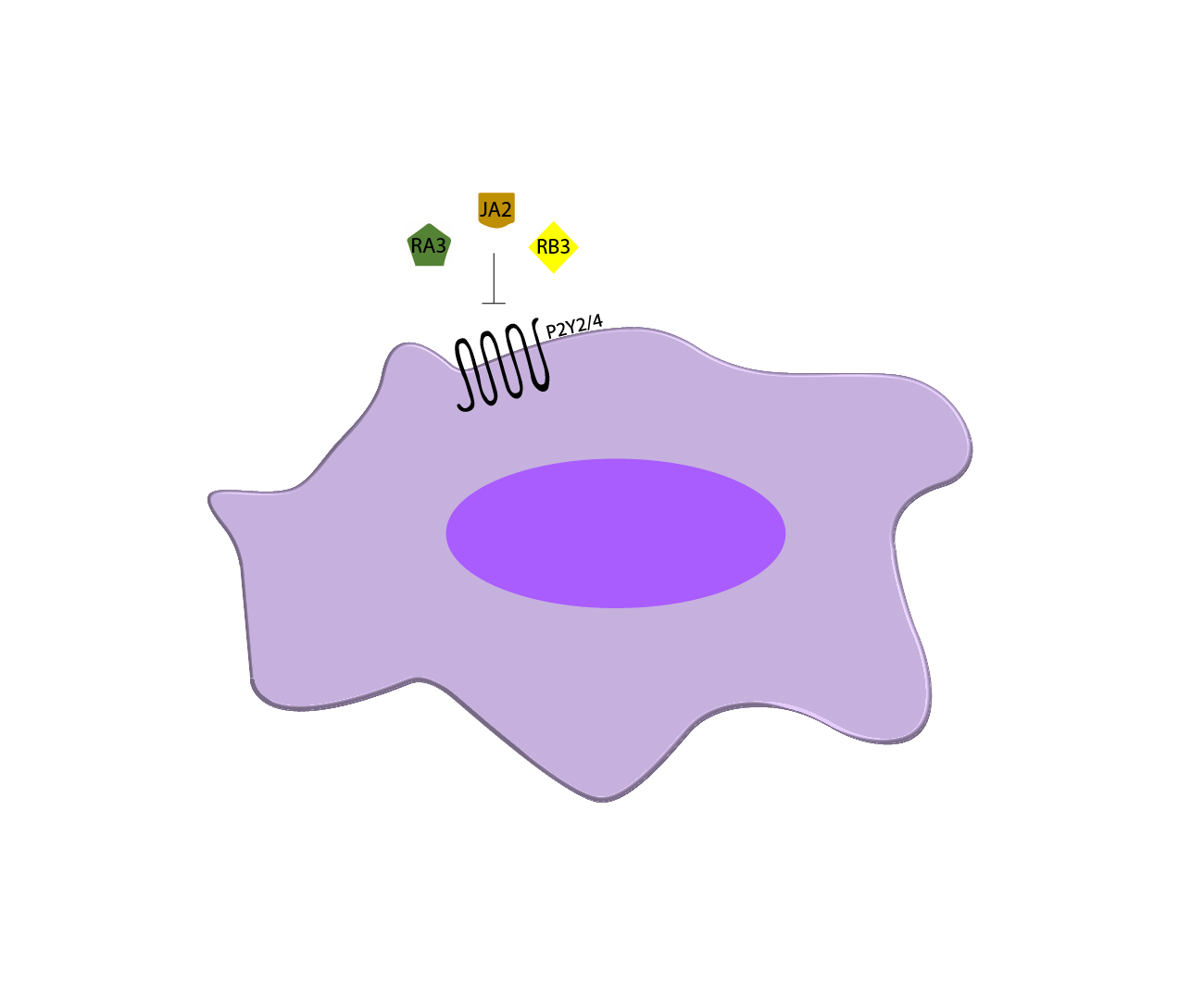P2Y2 and P2Y4 receptors are physiologically activated by UTP and are widely expressed in many cell types in humans. They promote an increase in intracellular calcium via PLCβ/ IP3 and act on ion flux and water secretion. P2Y2 plays an important role in inflammation and proliferation of tumor cells, which could be attenuated with the use of antagonists. However, little is known about the physiological functions related to P2Y4 due to the lack of selective ligands for these receptors, which can be solved through the search of novel compounds with antagonistic activity. In the present study, we have applied a methodology of calcium measurement to identify new antagonist candidates for these receptors. Firstly, we established optimal conditions for calcium assay using J774.G8, a murine macrophage cell line, which expresses functional P2Y2 and P2Y4 receptors. J774.G8 cells were loaded with 2 μM of Fluo-4 to test its sensitivity in responding calcium stimuli. ATP and ionomycin, known as inductors of intracellular calcium rise, were used to stimulate cells. The EC50 obtained were 11 μM and 103 nM, respectively. Subsequently, investigation of P2Y2 and P2Y4 expression was performed. These cells responded with EC50 of 1.021 μM to the UTP stimulation. Screening assays were performed and a total of 100 extracts from Brazilian natural products were tested. JA2, RA3, and RB3 extracts stood out for their ability to inhibit UTP-induced responses without causing cytotoxicity and presented IC50 of 32.32 μg/mL, 14.99 μg/mL, and 12.98 μg/mL, respectively. Collectively, our results point to the discovery of potential antagonists candidates from natural products for UTP-activated receptors.

